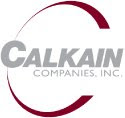 It is not a secret that many commercial real estate loans stand on shaky foundations. In-fact it has been recently estimated that a “sizable amount of the additional $700 billion in commercial real estate loans coming due during that time frame are loans that could not get refinanced at existing levels in the current lending environment”. This of course will lead to many foreclosures and create an investment opportunity for CRE buyers. However, for the unfortunate holder of the original asset there may be a potentially huge tax consequence. There may also be a glimmer of hope in the form of a Zero-transaction.
It is not a secret that many commercial real estate loans stand on shaky foundations. In-fact it has been recently estimated that a “sizable amount of the additional $700 billion in commercial real estate loans coming due during that time frame are loans that could not get refinanced at existing levels in the current lending environment”. This of course will lead to many foreclosures and create an investment opportunity for CRE buyers. However, for the unfortunate holder of the original asset there may be a potentially huge tax consequence. There may also be a glimmer of hope in the form of a Zero-transaction. Simply speaking a zero transaction is the acquisition of a property using a highly leveraged loan (loan to value usually 88% plus) with all rental income dedicated towards debt service, thus producing “zero income” for the property owner. One of the vehicle’s applications is to defer tax liabilities incurred in a commercial foreclosure.
The Problem
Though it is not widely known, the foreclosure of a commercial property is often a taxable event. How the IRS computes the tax depends on whether the property was financed with a recourse or non-recourse loan. In the case of a recourse loan, tax liability is calculated by taking the difference between a property’s fair market value and its adjusted basis. The tax liability of a non-recourse loan (which the remainder of this piece will be dealing with) is calculated by taking the difference between a property’s outstanding mortgage balance and the property’s adjusted tax basis.
The “outstanding mortgage balance” is the key element which catches investors off guard.
For example:
Let’s say you bought a property for $5M (your cost basis) which subsequently has been depreciated to an adjusted tax basis of $3M. Let’s also say you refinanced this property during an upsurge in the market and pulled out $8M of equity. If this transaction was foreclosed upon (without any action to defer tax liabilities), you would face a taxable gain of $5M, i.e. the $8M in outstanding mortgage amount minus the $3M in adjusted tax basis.
Thus, investors who think returning the keys to the bank absolves them of all monetary concern involved in a commercial foreclosure are gravely mistaken. The IRS views any money previously pulled from a property via loan refinancing to be taxable gain, even though the property is foreclosed upon.
The Solution
With proper scheduling and use of the 1031 exchange, the situation above can be avoided through the purchase of a “zero income” property. The reason a zero income property can be so beneficial is due to its highly leveraged nature and its ability to defer a taxable gain through a 1031 transaction. A portion of the money an investor would have otherwise paid to the IRS can be used instead to acquire the zero income property through the 1031 exchange.
Here is how our previous example would be impacted by a zero transaction:
Assuming a tax rate of 25% (Federal capital gains rates, Federal recapture rates and state taxes), the $5M in gain would cost $1.25M in taxes. If instead, a zero transaction was pursued, the investor would need to replace the balance of the debt, $8M. By exchanging into a zero income property for approximately 10% of the $8M debt amount replaced ($800,000), there would be a $450,000 savings ($1.25M-$800,000) and the investor would own NNN property with a very high credit tenant.
In order for the transaction to flow smoothly, it will have to be properly organized and scheduled on an individual basis. It should be noted that a zero transaction is not possible without outside assistance of at least a Qualified Intermediary and qualified professional tax and accounting advice. If done properly, this strategy can be an invaluable tool for investors caught in a foreclosure situation.





